Together on the Journey: A Weekly Word from Archbishop Hebda
 This Saturday, we honored Saint Matthew, the evangelist, whose Gospel – written primarily for a Jewish audience – contains the greatest detail on how Jesus fulfills the Old Testament prophecies, weaving together a rich theological narrative that has well catechized Christians for nearly two millennia. This same saint, emboldened by the Holy Spirit following Pentecost, traveled widely to spread the Good News of Jesus Christ. The Fathers of the Church have him bringing Christianity as far as Ethiopia, where tradition says he was martyred.
This Saturday, we honored Saint Matthew, the evangelist, whose Gospel – written primarily for a Jewish audience – contains the greatest detail on how Jesus fulfills the Old Testament prophecies, weaving together a rich theological narrative that has well catechized Christians for nearly two millennia. This same saint, emboldened by the Holy Spirit following Pentecost, traveled widely to spread the Good News of Jesus Christ. The Fathers of the Church have him bringing Christianity as far as Ethiopia, where tradition says he was martyred.
It’s probably safe to say that none of Saint Matthew’s contemporaries – nor Matthew himself – could have predicted he would serve in such a role. As a tax collector, sometimes called Levi, Matthew would have been seen as a sinner and an outcast because of his collaboration with the Romans. But the Lord sees not as man sees (1 Samuel 16:7), and at Jesus’s call to follow him, Matthew responds in faith (Matthew 9:9).
I love that in portrayals of this moment, no one seems more shocked than Matthew at this calling. The Chosen handles this masterfully, first with Matthew’s bewildered questioning – could Jesus be calling him? – followed by a resolute joy in giving his “Yes.” The classic Caravaggio painting, “The Calling of Saint Matthew,” shows a similar bewilderment that Christ could be calling a tax collector to follow him.
In my 18 years in Rome, I would often go to the Church of Saint Louis, the French national Church, to admire the Caravaggio paintings, and to pray in the proximity of the three paintings depicting the life of Saint Matthew, especially when I was a seminarian and still discerning my vocation. (Lawyers, after all, were often just a small step up the ladder from tax collectors in the Bible.) How could the Lord be calling me, a lawyer, to be a priest? I always prayed not only with the painting of Matthew’s call, but also with the companion piece by Caravaggio in the same chapel depicting Matthew’s martyrdom, reminding me that the response to the Lord’s call always has a cost.
Subscribe now to receive Together on the Journey in your inbox every week.



